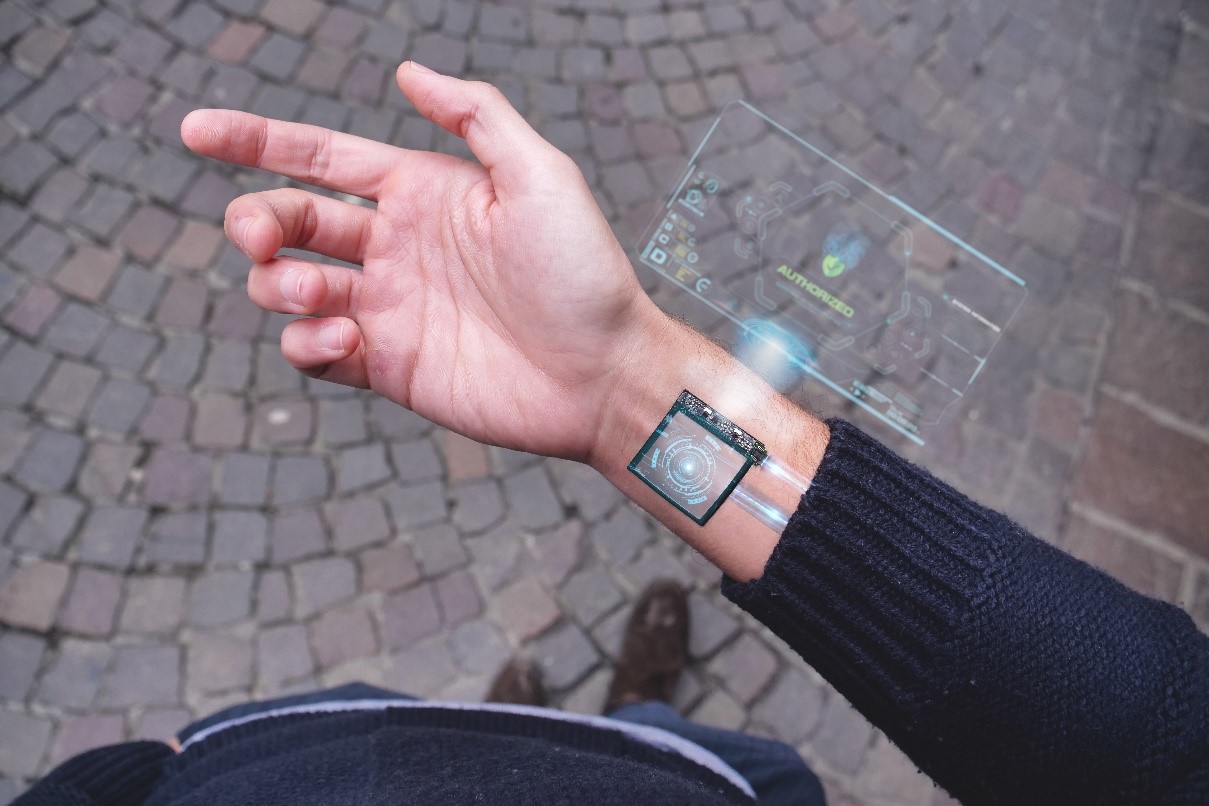‘Skintilla’ of Warmth: A Breakthrough in Wearable Body Temperature Monitoring
Scientists develop an innovative, ultra-sensitive, and flexible temperature sensor for continuous temperature monitoring on the skin
Research published online in Advanced Materials in November, 2021

Monitoring body temperature is essential in the diagnosis of many diseases, and innovations in wearable sensors can greatly benefit infants, the elderly, and other vulnerable populations.
Photo credit: Shutterstock
Body temperature provides us with useful information about our health and technologies for measuring it are being constantly developed for use in medical diagnosis, skin hydration monitoring, and physiological research. Although infrared cameras remain the trusted gadget for sensing body temperature, they are greatly affected by external factors like humidity and the subject’s movement. Moreover, infrared sensing is not realistically suitable for continuous body temperature monitoring, less so for high-risk individuals like infants or the elderly.
Another way to measure body temperature is through flexible electronics attached like stickers on the skin. While much progress has been made over the past decade in the field of these devices, most direct sensing approaches are limited by the main recurring challenges of durability, precision, resolution, and reliability. Fortunately, this situation might soon be reversed, thanks to research by scientists at Yonsei University. Led by Professor Ki Jun Yu, the team developed an ultrasensitive and stretchable temperature sensor array that can be worn directly on the skin.
In their paper published in Advanced Materials, the team describes the design of these novel sensors through an innovative fabrication process in which a silicon nanomembrane (SiNM) is doped with gold impurities. The gold particles alter the Fermi energy levels of the SiNM in such a way that even a small increase in temperature causes a surge in free electrons, which in turn lowers the resistivity of the material. Thus, body temperature can be easily determined by measuring the resistance of the sensor. Most importantly, the designed device greatly outperforms the competition. In this regard, Prof. Yu observes: “We realized a temperature coefficient of resistance that is 22 times higher than that of existing metal-based temperature sensors with similar structures. Our sensor array also exhibited one of the highest thermal sensitivities among inorganic material-based temperature sensors, as well as higher spatial resolution and accuracy than conventional epidermal gold sensors.”
The gold-doped SiNM can be easily transferred to an ultrathin polymer layer with a specially designed serpentine mesh structure, which grants it mechanical stability and makes the device durable. The result is a thin and flexible temperature sensor array that can be conformally attached to the skin—who doesn’t like a snug fit! Additionally, as experiments measuring body temperature and respiration rate during exercise suggest, the proposed device can provide accurate measurements without being affected by physical movement and moisture (sweat).
This temperature sensor can be used in a variety of bioelectronic devices and wound-care systems. “Our work lays the foundation for monitoring body temperature essential for precision diagnosis of infectious diseases like COVID-19 and management of certain health conditions, as well as developing better performing electronics.” concludes Prof. Yu.
Indeed, measuring (thermal) ‘hotness’ just got cooler!
Recommended Articles
Professor Jong-Hyun Ahn
Novel technique for producing high-resolution micro-LED displays
Professor Seong Chan Jun
Professor Donghyun Kim
Array of hope: Up close and personal with mitochondria in neurons